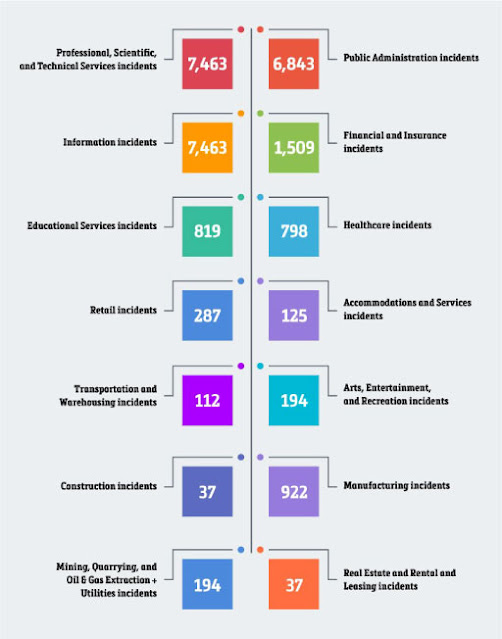In the past decade, cybercrime has witnessed an exponential surge, leading to tremendous financial and critical data losses across nearly all domains. From smartphones to computer systems, existing and new vulnerabilities have left gaping holes in device security. Most of these security vulnerabilities are caused by powerless coding practices, driving to the program code’s low integrity. There are 5 main types of application attacks, wherein hackers control application-layer loopholes to dispatch their attacks on poorly coded systems.
The method of defending websites and online resources from numerous security attacks that target bugs in the application code is called web application security. Content management systems (e.g., WordPress), database administration solutions (e.g., phpMyAdmin), and Software as a Service (SaaS) frameworks are typical targets for web application assaults.
Types of Application Attacks
SQL Injection Attack
An SQL injection attack is essentially a code infusion method that is used to attack web-based and data-driven applications. The use of this attack methodology is aimed at getting access to sensitive/secure information. The SQL injection attack entails the embedding of malicious SQL scripts in a section field of a web application. Such attacks exploit open fields to infiltrate a database. The impact of an SQL injection attack considers the targeted database and the roles and privileges in the existing SQL policy. There are two types of SQL attacks, namely:
◉ First Order Attacks: In this attack type, a malicious string is inserted into the SQL script to modify the code for immediate execution.
◉ Second Order Attacks: In this attack form, the SQL manipulation is carried out via injecting a persistent storage module, e.g., a table row. The storage system is considered as a trusted source by the target machine, thus allowing the hacker to execute the attack via other activities.
Cross-Site Scripting (XSS) Attack
Cross-site scripting, or more commonly known as XSS, is yet another powerful attack vector that exploits a vulnerability in network protection, thus enabling an attacker to exploit compromised applications. The XSS attack allows the hacker to infiltrate the policy of origin that distinguishes multiple websites from each other. This attack type masks the attacker as an ordinary user, thus giving access to a user’s data and the space to perform activities which a typical user can using his/her login credentials.
Parameter Tampering
One of the most dangerous forms of application attacks is parameter tampering. Using this attack vector, a hacker can access the information shared between the client and the server, which typically consists of credentials and authorizations, product cost and amount, etc. Web Scarab and Paros Proxy are primarily used when conducting a parameter tampering attack.
Directory Traversal
Directory traversal, also referred to as route traversal, allows a hacker to infiltrate a web server’s root directory using a loophole and then gain access to other server file system locations. The loophole is dependent on the type of web server and the operating system in use.
For example: The webserver process can be made to access files beyond the root of the web document, if a bug is present in the system. This can lead to a path traversal loophole that can be exploited to carry out a directory traversal attack. The attacker can then gain access to a host of arbitrary files, including application source code, device files, server logs, and other files that containing sensitive information.
Denial-of-Service (DoS) Attack
A Denial-of-Service (DoS) attack is carried out to shut down a system or network, thus making it unavailable to the intended users. DoS attacks overwhelm the target with traffic, giving it information that causes a crash. In all cases, the DoS attack deprives legal users of the facility or resource they were anticipating. DoS attack victims also threaten high-profile organizations’ web servers, spanning sectors such as finance, trade, media, and government. While DoS attacks usually do not result in fraud or destruction of valuable data or other assets, they will cost the victim a lot of time and resources.
Why Applications Become Vulnerable to Attacks
Web apps do pose a range of security issues arising from inappropriate coding, notwithstanding their benefits. In a web application attack, significant weaknesses or flaws allow hackers to obtain direct and public access to databases.
Web apps are an easy target when programmers make mistakes that allow confidential data to be obtained by unauthorized persons or permit them to receive administrative access privileges to the web application itself or even the server. Attacks commonly exploit the reality that web applications recognize user feedback and will not screen this input for malicious content. Web apps are particularly vulnerable to design threats and firewalls do not secure them. If they are on the internet, they must be open all the time. Malicious hackers will, however, attempt to access them quickly.
Many of these databases have useful data that makes them a popular target for attacks. While such acts of vandalism as defacing company websites are still prevalent, perpetrators now tend to gain access to the confidential data residing on the database server because of the large payoffs in selling the results of data breaches.
























